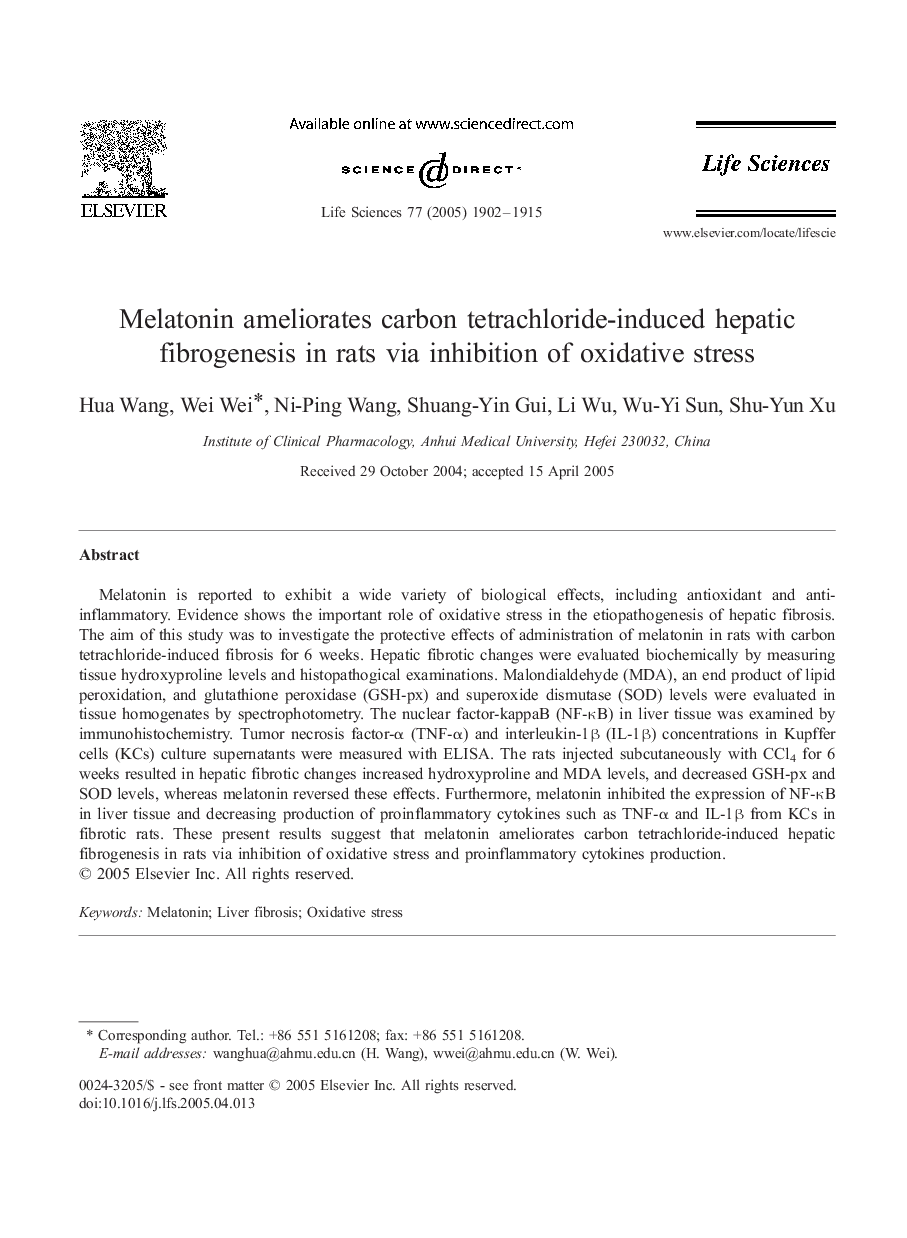| Article ID | Journal | Published Year | Pages | File Type |
|---|---|---|---|---|
| 9012631 | Life Sciences | 2005 | 14 Pages |
Abstract
Melatonin is reported to exhibit a wide variety of biological effects, including antioxidant and anti-inflammatory. Evidence shows the important role of oxidative stress in the etiopathogenesis of hepatic fibrosis. The aim of this study was to investigate the protective effects of administration of melatonin in rats with carbon tetrachloride-induced fibrosis for 6 weeks. Hepatic fibrotic changes were evaluated biochemically by measuring tissue hydroxyproline levels and histopathogical examinations. Malondialdehyde (MDA), an end product of lipid peroxidation, and glutathione peroxidase (GSH-px) and superoxide dismutase (SOD) levels were evaluated in tissue homogenates by spectrophotometry. The nuclear factor-kappaB (NF-κB) in liver tissue was examined by immunohistochemistry. Tumor necrosis factor-α (TNF-α) and interleukin-1β (IL-1β) concentrations in Kupffer cells (KCs) culture supernatants were measured with ELISA. The rats injected subcutaneously with CCl4 for 6 weeks resulted in hepatic fibrotic changes increased hydroxyproline and MDA levels, and decreased GSH-px and SOD levels, whereas melatonin reversed these effects. Furthermore, melatonin inhibited the expression of NF-κB in liver tissue and decreasing production of proinflammatory cytokines such as TNF-α and IL-1β from KCs in fibrotic rats. These present results suggest that melatonin ameliorates carbon tetrachloride-induced hepatic fibrogenesis in rats via inhibition of oxidative stress and proinflammatory cytokines production.
Related Topics
Health Sciences
Medicine and Dentistry
Cardiology and Cardiovascular Medicine
Authors
Hua Wang, Wei Wei, Ni-Ping Wang, Shuang-Yin Gui, Li Wu, Wu-Yi Sun, Shu-Yun Xu,
